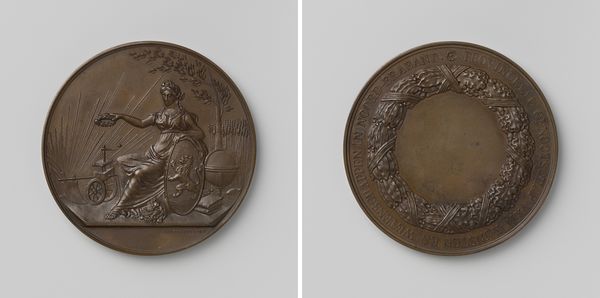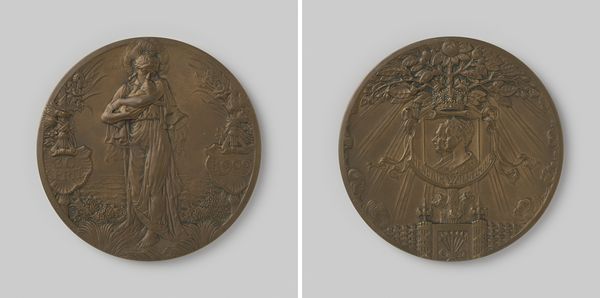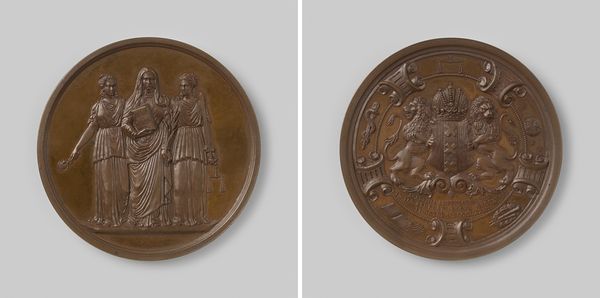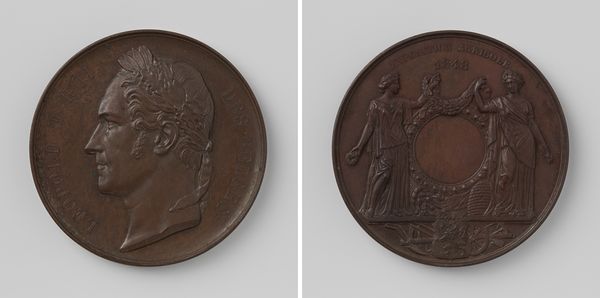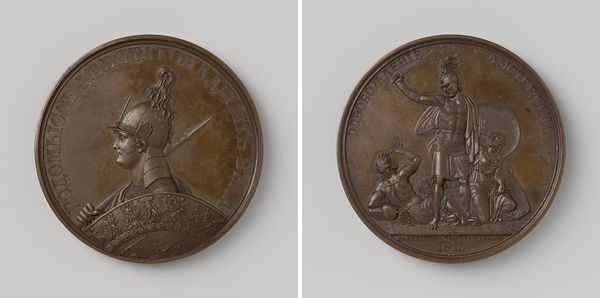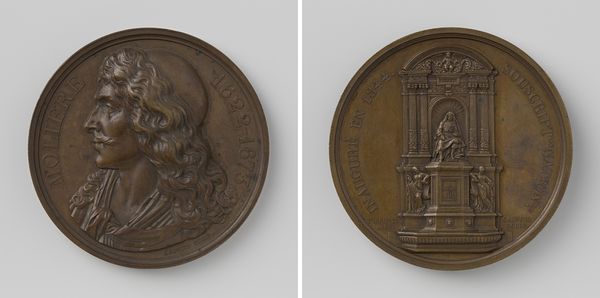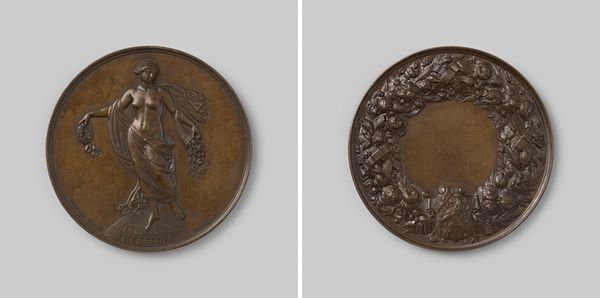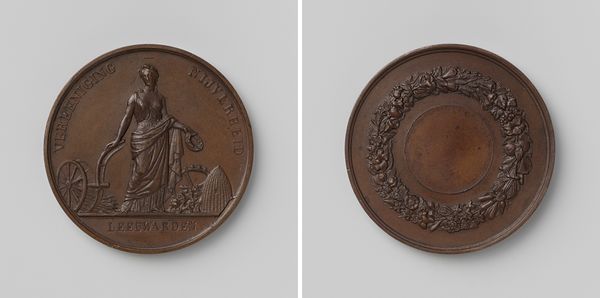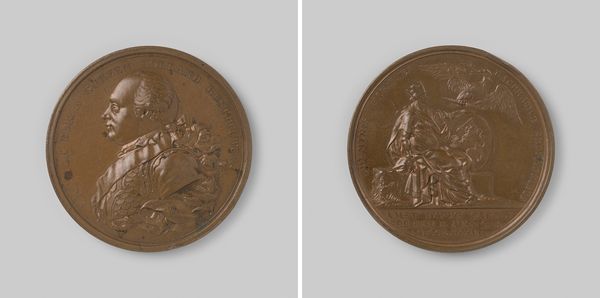
Bezoek van de Franse koninklijke familie aan de Monnaie des Medailles te Parijs 1833
0:00
0:00
carving, metal, relief, bronze, sculpture, engraving
#
portrait
#
medal
#
carving
#
metal
#
sculpture
#
relief
#
bronze
#
sculpture
#
carved
#
history-painting
#
academic-art
#
engraving
Dimensions: diameter 7.5 cm, weight 2108 gr
Copyright: Rijks Museum: Open Domain
Curator: This intriguing object is a bronze medal, or rather, a relief sculpture in bronze, titled "Bezoek van de Franse koninklijke familie aan de Monnaie des Medailles te Parijs," crafted in 1833 by Jean-Jacques Barre. What strikes you first about it? Editor: The intricate detail. The materiality of the bronze is palpable; you can almost feel the pressure and labor that shaped these figures. There's a certain density to its historical narrative. Curator: Precisely! Observe how Barre orchestrates the composition. On one side, we see juxtaposed portraits—Louis-Philippe and Queen Marie-Amélie, framed separately yet connected by allegorical figures and symbols of French royalty, implying dynastic continuity. The opposing face consists of different family member depictions. The symmetry is unmistakable. Editor: And how this was made matters. The meticulous process of engraving and carving into metal; imagine the hours of labor creating a tool intended to produce a multiple. The role of the Monnaie des Medailles, a symbol of economic and social power at the time, suggests the meticulous regulation of even artistic representation. Curator: Indeed, the engraving's precision allows for a clear hierarchy within the composition. Notice the impeccable rendering of physiognomy; each profile bears the hallmarks of Academic art, aimed to project authority. Semiotically, the piece signifies legitimized Bourbon rule, rendered immutable through the permanence of bronze. Editor: It is more than just bronze, but an official production that embodies power. One wonders about the place of workers in all this; who were the individuals producing it, and what were their lives like? How much control did they actually wield in the final visual manifestation? Curator: A valid inquiry. While those answers elude us at present, recognizing the artwork as more than just formal elements, but a product shaped by its time— that seems very important here. Editor: Yes, considering these medals within a larger landscape of labor practices sheds fresh light onto how artistry became enmeshed within socioeconomic power dynamics. Curator: So the medal's value goes beyond surface and royal representation; instead its complex composition hints at deeper connections. Editor: Agreed, a dense yet intriguing little document, made manifest from collective work.
Comments
No comments
Be the first to comment and join the conversation on the ultimate creative platform.
